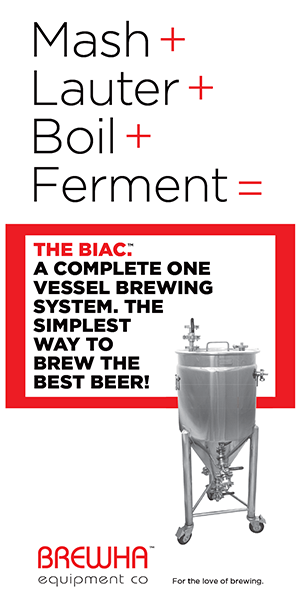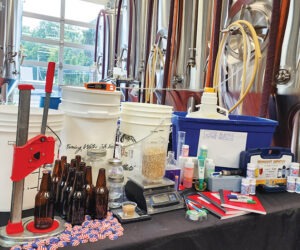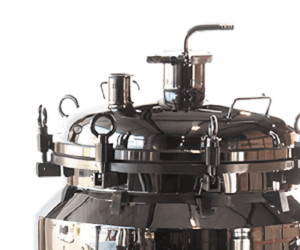Hydrometers and Refractometers
Both hydrometers and refractometers are tools that operate in a similar space, and both have pros and cons associated with them. Brewers need to understand their inherit flaws as well as how to best utilize them to glean the most accurate and insightful information from both.
Both instruments read dissolved solids in a liquid solution. This is important because it determines how much alcohol is produced during fermentation, when yeast turns simple sugars into carbon dioxide and ethyl alcohol. Hydrometers use density to measure the dissolved solids while refractometers use a property known as the refractive index (RI). Distilled water should measure 1.000 specific gravity on both a hydrometer and refractometer.
Hydrometers

There are many different types of hydrometers out there in the marketplace, but if you were to search “brewing hydrometer,” a basic triple-scale hydrometer will dominate the results. Most will provide readings between roughly 0.990–1.160, but ranges can vary greatly among different hydrometers.
Hydrometers are simple devices that rely on a precise weight to measure the density of the solution it’s floating it. As mentioned previously, in a solution of pure (distilled) water, weight in a brewer’s hydrometer allows the tool to float to a determined marking labeled as 1.000 specific gravity (SG) or 0 °Plato at either 60 °F (16 °C) or 68 °F (20 °C). (Homebrewers prefers specific gravity while professional brewers prefer the Plato scale.) Please note the temperature calibration on the hydrometer you are using. Try to make sure your wort or beer is close to this temperature for the most accurate readings. Some hydrometers come with a thermometer in the bulbous base for confirmation and are typically called thermohydrometers.
Hydrometers are great for either original gravity (OG) or finishing gravity (FG). Just note that at FG there is some ethyl alcohol in solution and its concentration will affect your results. Common ABV calculators will disregard this affect, but know that ethyl alcohol is less dense than water and will skew the density reading too low. So, brewers typically see a slight rise in real ABV measurements versus many calculated with hydrometer readings, most notably with beers greater than 8% ABV.
Hydrometer readings can also be skewed with carbon dioxide dissolved in solution. Whether the beer has just finished fermentation or the beer has been carbonated, carbon dioxide is going to lift the hydrometer up in the cylinder and give a false reading. Leaving the sample out overnight, pouring the sample through a coffee filter, or shaking the sample will ensure a proper reading.
A final note about hydrometers, there are many different kinds available, even within the brewing realm. Brewer’s hydrometers can be specialized for specific tasks like taking final gravity readings or taking mash gravity. No matter which you are using, be sure to always read the hydrometer at eye level.
Refractometers

If you’ve ever stood shin-deep in a still body of water and noticed your leg appears to bend at the water’s surface, you’re seeing the effects water has on light: It bends it. Refractometers take advantage of this fact along with another aspect of RI, and that is that the more sugar dissolved, the higher the RI value of the solution. Ethyl alcohol also has a higher RI than pure water, so many brewers stop using a refractometer after brew day and rely on a hydrometer for FG readings.
Refractometers’ greatest strength relies in their ability to quickly provide results with only a drop or two of liquid. Refractometers allow brewers to quickly find the density (SG) of their solution in seconds with only 1–2 drops of solution versus about 6 oz. (175 mL) with a hydrometer. This makes it especially handy on brew day when you might want to know the wort gravity during runoff, or pre-boil, or post-boil (or anytime). It’s one of the best tools a brewer can acquire looking to fine-tune their beers.
There are several different types of refractometers available. We recommend purchasing from a reputable supplier of brewing equipment. There are some available with Automatic Temperature Compensation (ATC), which are handy if using in a hot or cold environment. Some also have an artificial light, but most rely on natural light to provide the needed backlight for refraction through the sample.
Calibration
If you don’t have a reverse osmosis system, keeping a jug of store-purchased distilled water will allow for calibration of both instruments. Refractometers generally have a knob to adjust the line to zero. Hydrometers cannot be reset to zero (1.000) but if you know that the scale is reading three points too high, then you can still use the hydrometer by making that 3-point correction to your readings.
For more advanced calibrations, you can do a second calibration with a known solution. An easy one uses distilled water and dried malt extract (DME), typically 2 oz. (56 g) of DME in 8 ounces (227 g) of water, and then measure that sample using both a hydrometer and your refractometer. This should read at 1.040 if done properly. My yeast starter medium is 100 g of DME dissolved into a total of 1 L of solution. This reads 1.035 and, when making a yeast starter, I can kill two birds with one stone when I’d like to make sure these instruments are calibrated.



